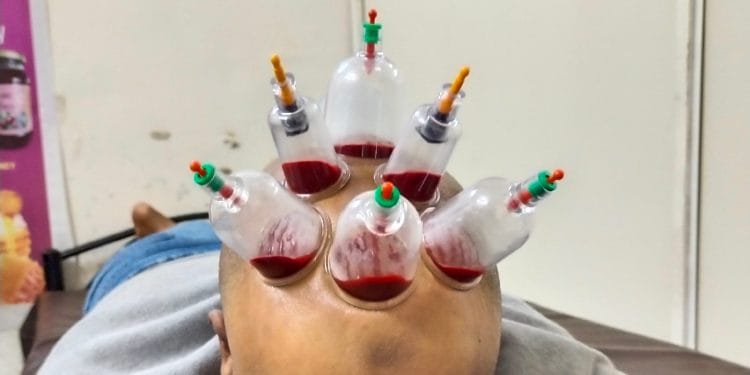In the bustling metropolis of Delhi, where the pace of life is fast and the stress levels high, finding effective ways to relax and rejuvenate has become increasingly important. Among the various wellness therapies available, massage therapy and cupping, particularly through Massage Therapy Cupping Delhi, have gained significant popularity. This article delves into the intricacies of these therapies, their benefits, and the top centers in Hijama Treatment Center Delhi offering these services.
Understanding Massage Therapy
Massage therapy involves the manipulation of muscles and tissues to alleviate pain, reduce stress, and promote overall wellness. Various techniques are used in massage therapy, including Swedish massage, deep tissue massage, sports massage, and aromatherapy massage. Each method has its unique benefits, catering to different needs and preferences.
- Swedish Massage: This is the most common type of massage, involving long, flowing strokes, kneading, and circular movements. It is ideal for those looking to relax and relieve mild tension.
- Deep Tissue Massage: This technique focuses on the deeper layers of muscle tissue. It is especially beneficial for chronic pain and tight muscles.
- Sports Massage: Designed for athletes, this type of massage focuses on preventing and treating sports injuries. It combines techniques of Swedish and deep tissue massage.
- Aromatherapy Massage: This involves the use of essential oils to enhance the massage experience. Each oil has different properties, such as relaxation, invigoration, or healing.
The Ancient Art of Cupping
Cupping therapy is an ancient form of alternative medicine in which a therapist places special cups on the skin to create suction. This suction mobilizes blood flow to promote healing and is believed to facilitate the removal of toxins from the body. There are two main types of cupping: dry cupping and wet cupping (Hijama).
- Dry Cupping: This involves creating suction on the skin with cups. The cups can be made of various materials, including glass, bamboo, or silicone. The vacuum created pulls the skin and muscle into the cup, promoting blood flow and healing.
- Wet Cupping (Hijama): In this form, after the initial suction, the therapist makes small, superficial cuts on the skin. The cup is then reapplied to draw out a small quantity of blood. This is believed to remove toxins and improve circulation more effectively than dry cupping.
Benefits of Cupping Therapy
Cupping therapy offers numerous health benefits, making it a sought-after treatment in wellness centers across Delhi:
- Pain Relief: Cupping is effective in treating chronic pain conditions, including back pain, migraines, and arthritis. The suction helps increase blood flow to the affected areas, promoting healing and pain relief.
- Reduced Inflammation: By drawing blood to the surface, cupping can reduce inflammation and promote healing in injured tissues.
- Relaxation and Stress Relief: Similar to massage therapy, cupping can help in relaxation and stress relief. The process can lead to the release of endorphins, which are natural painkillers and mood enhancers.
- Improved Blood Circulation: Cupping therapy improves blood flow, which can enhance the delivery of oxygen and nutrients to the tissues, promoting overall health.
- Detoxification: Wet cupping (Hijama) is particularly noted for its detoxifying effects, as it removes stagnant blood and toxins from the body.
Preparing for a Cupping Session
To get the most out of your cupping therapy session, it’s essential to prepare adequately:
- Hydrate: Drinking plenty of water before and after the session helps in detoxification and aids the healing process.
- Avoid Heavy Meals: It’s best to avoid heavy meals at least two hours before the session to ensure comfort.
- Wear Comfortable Clothing: Loose, comfortable clothing makes it easier for the therapist to access the treatment areas.
- Communicate: Inform your therapist about any medical conditions or medications you are taking to ensure the treatment is safe and effective.
Post-Cupping Care
After a cupping session, it’s essential to follow some aftercare tips to maximize the benefits:
- Rest: Give your body time to heal and recover by resting after the session.
- Stay Hydrated: Continue drinking plenty of water to help flush out toxins.
- Avoid Exposure: Keep the treated areas covered and avoid exposure to wind, cold, or direct sunlight to prevent any adverse effects.
- Gentle Exercise: Light stretching or gentle exercises can help in maintaining the benefits of the therapy.
Conclusion
Massage therapy and cupping, particularly Hijama, are invaluable practices for enhancing health and well-being. In Delhi, these therapies are widely accessible, with numerous reputable centers offering expert services. Whether you’re seeking relief from chronic pain, stress reduction, or overall wellness, exploring these traditional therapies can provide significant benefits. As with any treatment, it’s essential to consult with trained professionals to ensure safety and effectiveness, making the vibrant city of Delhi a hub for holistic health and rejuvenation.
































































